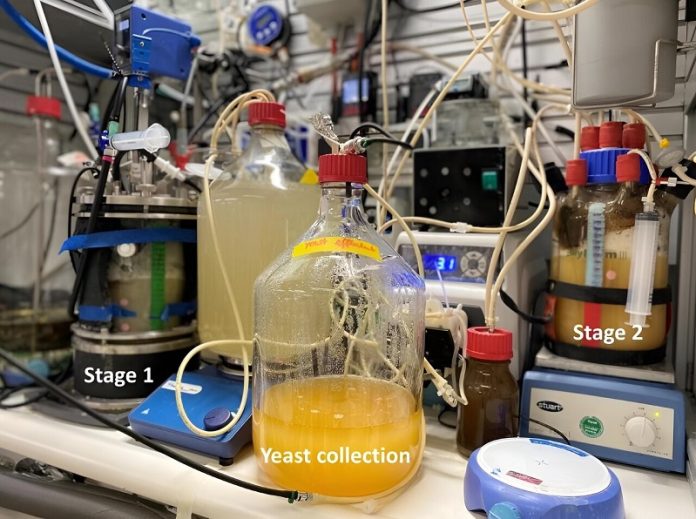
Researchers in Germany have developed an exciting new way to produce protein and vitamin B9 using only renewable energy, carbon dioxide (CO₂), and microbes.
This process could lead to a sustainable, nutrient-rich protein source that may one day be on our plates.
The study, published in Trends in Biotechnology, highlights how this innovative technology could help address global challenges like food shortages and climate change.
“This process is similar to brewing beer, but instead of feeding the microbes sugar, we gave them gas and acetate,” explains Largus Angenent, the lead author from the University of Tübingen.
While yeast typically produces vitamin B9 (also known as folate) from sugar, the researchers wanted to see if it could do the same with acetate, which is a form of vinegar.
With the world’s population approaching 10 billion and climate change making food production more difficult, Angenent says that new methods like this are crucial.
By producing protein in bioreactors instead of relying on crops to feed animals, food production can become much more efficient and sustainable.
The team created a two-stage system in their bioreactor. In the first stage, a bacterium called Thermoanaerobacter kivui turns hydrogen and CO₂ into acetate.
In the second stage, baker’s yeast (Saccharomyces cerevisiae) feeds on acetate and oxygen, producing both protein and vitamin B9. Clean energy sources like wind power can be used to generate the necessary hydrogen and oxygen from water.
The results were promising. Yeast fed with acetate produced as much vitamin B9 as yeast that feeds on sugar. Just 6 grams (about 0.4 tablespoons) of dried yeast meets the daily requirement for vitamin B9.
A team led by Michael Rychlik at the Technical University of Munich confirmed these vitamin levels.
When it comes to protein, the yeast was even more impressive. Eighty-five grams (around 6 tablespoons) of yeast provides 61% of a person’s daily protein needs, which is higher than the protein found in beef, pork, fish, or lentils.
However, the yeast needs to be treated to remove certain compounds that could cause gout if consumed in large amounts. Even after treatment, the yeast still meets 41% of daily protein needs, making it a strong alternative to traditional protein sources.
This new technology offers a way to produce food without using land, helping to preserve natural spaces and reduce carbon emissions. It could also play a key role in fighting food shortages, especially in developing countries.
Although there’s more work to be done to improve production and ensure food safety, Angenent believes this process has great potential. “It’s exciting to make vitamins and protein without using land, and the end product is vegetarian, vegan, non-GMO, and sustainable,” he says.



